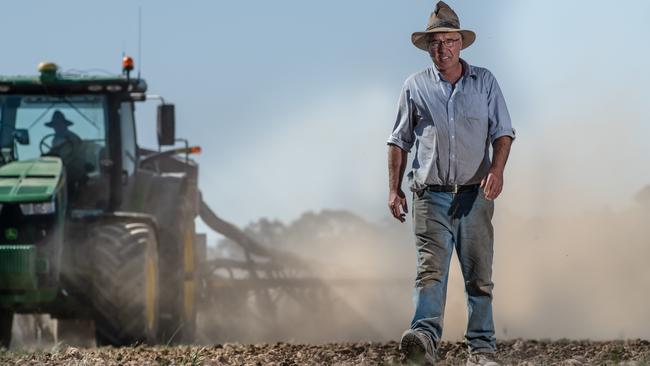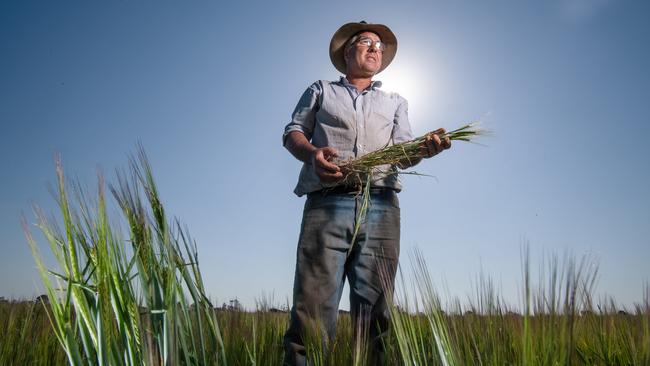How to protect our food bowl in a changing environment
Farming crops in a changing environment presents a challenge with the need to feed a growing population, and one Victorian group is looking to stay ahead of the game.
Future Victoria
Don't miss out on the headlines from Future Victoria. Followed categories will be added to My News.
Farmers are gearing up to produce food for the future that will be less reliant on strong rainfall.
Gippsland Agricultural Group is a collection of growers and researchers in Victoria’s east who have been conducting trials of drought-resistant crops and soil fertility for variable climates.
Bairnsdale farmer Trevor Caithness said the work had started on a 10ha site with the aim of replicating hardy crops that grow outside the region.
“Traditionally we have been growing a lot of rye-type crops, which need a favourable season to grow well,” he said.
“When you see a variety that grows quite well outside your region it doesn’t necessarily mean it will grow well in your region.

“The purpose of the trial is to bring into our region and ‘ground truth’ them — grow them in each climate and soil type.”
Gippsland East Nationals MP Tim Bull said the group wanted financial backing to broaden the research that would be “beneficial to many in these dry times”.
Last month, the Andrews Government gave $400,000 to help expand to a 100ha site, as part of its statewide drought assistance package.
Mr Caithness said the group hoped to get East Gippsland and Wellington area councils as financial backers of the facility.

MORE FUTURE VICTORIA NEWS:
IN-HOME CARE TO EASE HOSPITAL BUDGET PRESSURES
THE EASY FOOD FIX THAT COULD CURE HEALTH CRISIS
THE NEXT FOODIE HOT SPOTS IN REGIONAL VICTORIA
One of the crops identified north of the divide and brought to the Gippsland trial site was Moby barley, fodder that can be planted in autumn and survive with less rainfall at other times of the year.
“It has great moisture utilisation abilities,” Mr Caithness said. “Farmers are preparing for increased variability of the environment we are growing in.
“I think most farmers are very rapidly adapting to that variability.
“Whether it’s growing different fodder or increasing their storage. Farmers are very adaptive.”
